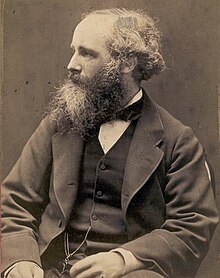It is a sunny Monday morning so what better way to start the week than with a few thoughts about Michael Faraday (1791-1867) and James Clerk Maxwell (1831-1879). And to delve into Maxwell’s beautiful equations maybe. A five-minute read.
Faraday was an extraordinary experimental physicist and visual thinker with incredible intuition. He didn’t have a strong formal mathematical education, but his conceptual understanding was profound. He was, in short, an experimental genius. An intuitive right-brain genius. Faraday together with Maxwell laid the groundwork for radio and radar and a whole lot more. Here are some of Faraday’s key contributions:
- Electromagnetic Induction (1831): This is his most famous discovery. He found that a changing magnetic field through a loop of wire induces an electric current (and thus an electromotive force, or EMF). This is the principle behind electric generators and transformers.
- Intuiting electromagnetism (EM): He observed that moving a magnet near a coil, or changing the current in a nearby coil, would induce a current in the first coil.
Lines of Force: To visualize electric and magnetic phenomena, Faraday introduced the concept of “lines of force” (what we now call field lines). He imagined these lines filling space, and their density and direction representing the strength and direction of the force. This was a radical departure from the “action at a distance” theories prevalent at the time.
Electrolysis: He established the quantitative laws of electrolysis, linking electricity with chemical affinity.
Diamagnetism: He discovered that all substances are affected by magnetic fields, coining the terms “diamagnetic” and “paramagnetic.”
Faraday Effect (Magneto-optical effect): He showed that a magnetic field can rotate the plane of polarization of light, providing the first hint that light and electromagnetism were related.
Maxwell on the other hand was a brilliant theoretical physicist with an excellent formal mathematical background thanks to his schooling firstly directly via his mother Frances and then via Edinburgh Academy, my own dad’s alma mata. He had no idea of course about matrix mathematics, the bedrock of today’s AI, but was excellent at the mathematics of the time, particularly vector calculus, which I believe he helped to develop. So what did Maxwell do? He took Michael Faraday’s real-life experimental results with electricity and magnetism and cast them into a rigorous mathematical framework; experimentation is the father of scientific discovery, but beautiful mathematics is the mother and grandmother and beyond. A kind of mitochondrial DNA of scientific discovery, if that is not stretching analogies a little too far. Maxwell was the yang to Faraday’s yin. Or the other way around. To be a little more formal here, and to link to my neuroscience training, Maxwell applied left-brain Aristotelian logic to Faraday’s right-brain neural network-derived conceptions. Here are some of Maxwell’s key contributions:
- Maxwell’s Equations: He formulated a set of four (in their modern vector form) partial differential equations that completely describe classical electromagnetism.
Electromagnetic Nature of Light: By manipulating his equations, Maxwell showed that they predicted the existence of electromagnetic waves propagating at a specific speed. This speed, calculated from purely electrical and magnetic constants (permittivity and permeability of free space), turned out to be remarkably close to the measured speed of light. This led him to propose that light itself is an electromagnetic wave.
Displacement Current: This was Maxwell’s most crucial theoretical addition. Ampère’s Law (which relates magnetic fields to currents) was incomplete for situations where electric fields were changing (e.g., in a capacitor). Maxwell introduced the concept of “displacement current” to make Ampère’s Law consistent and complete.
Kinetic Theory of Gases: He also made significant contributions to thermodynamics and the kinetic theory of gases, developing the Maxwell-Boltzmann distribution.
That is almost enough for now, time for the gym and then dog-walking. The mathematics will have to wait for another time. Some final thoughts though before the punch-bag. Both men were of course religious, as was almost everyone of the time — how else could mere mortals explain the beauty (and sometimes terror) of the living world except by recourse to an eternal ‘god’. Faraday was deeply religious and a member of a small religious sect called the Sandemanians, named after Robert Sandeman (1718 – 1771) a Scottish non-conformist theologian. Maxwell was much younger than Faraday, about 40 years his junior. Maxwell deeply admired the older Faraday. He clearly saw some kind of deep truth underlying Faraday’s experimental findings, and made the exceedingly non-intuitive link to come up with his own famous Displacement Current concept that a changing electric field could act like a current to create a magnetic field. Even in so-called ’empty space’! His own ‘aha’ moment. And perhaps this contributed to why Maxwell’s god seemed to be much more personal and immanent, even as he served as an Elder in the Church of Scotland. It is interesting that, like Planck and Pauli and others, Maxwell’s faith deepened as his scientific journey developed, once reportedly saying: “The more I study science the more I believe in [a] God”; despite his own deep thinking about the statistical and philosophical implications of the Second Law of Thermodynamics which, in summary, states that in any isolated system, the total entropy (a measure of disorder or randomness) can only increase or stay the same over time. Things naturally tend towards disorder, a concept he famously probed with his Maxwell’s Demon thought-experiment, questioning the law’s absolute reign. Indeed, if the universe tends towards decay and if heat flows from hot to cold, then how does Life emerge and persist? Such profound questions, foreshadowed by Maxwell’s inquiries, would echo powerfully some half-century later with Schrödinger’s own explorations, and continue to resonate through the confounding discoveries in the perplexing realm of quarks. And DNA.
So, we have Faraday, the visionary experimentalist, who felt his way to the truth, and Maxwell, the mathematical physicist, who gave that truth its elegant, universal language. One showed what happened; the other explained why and how with breathtaking precision. Their combined legacy isn’t just in our gadgets; it’s in our fundamental understanding of the universe. Two very different men, one incredible scientific revolution.
Time to punch that bag. Or my instructor.


